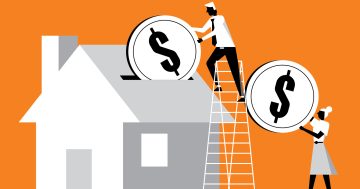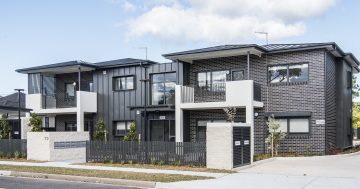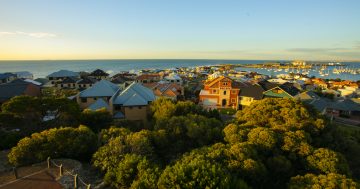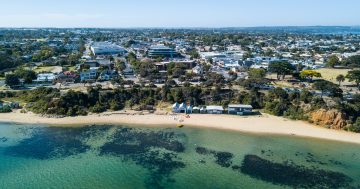Michael Yardney* makes an argument for investing in property despite current high prices and the likelihood of interest rate hikes in the near future.
 2022 promises to be a fascinating year in real estate. While we will not see the same level of overall price growth as 2021, there will still be a substantial uplift in property values over the year.
2022 promises to be a fascinating year in real estate. While we will not see the same level of overall price growth as 2021, there will still be a substantial uplift in property values over the year.
The difference this year is that the markets will be fragmented.
Last year was relatively unusual.
We experienced a once-in-a-generation property boom where values grew strongly almost everywhere.
Around 98 per cent of locations across Australia recorded rising property values, with many properties rising by more than 20 per cent.
This year is shaping as a more “normal” market, where some locations will still see strong property price growth, some will experience moderate price growth, some locations will languish, and a few locations will see property values falling.
And this will be dictated by local supply and demand, and local economic conditions.
Property values increased by more than 20 per cent in most locations and up to 30 per cent in some areas since the beginning of the pandemic, but at a time when wages growth was minimal.
This means properties are going to be less affordable for many Australians who just can’t borrow any more, especially as banks are raising their fixed-term interest rates.
We have already seen the first couple of months of this year delivering no price growth in our two big capital cities – Sydney and Melbourne.
Yet property values keep rising in the more affordable cities of Brisbane and Adelaide, where wages are much the same as the rest of Australia, yet properties are only half the price of Sydney.
Now, I’m not suggesting there won’t be capital growth in Sydney and Melbourne this year.
There will be.
But it will be segmented to areas where higher-income, more affluent people live and can afford to, and are prepared to pay more to upgrade their homes and live in aspirational locations.
Other areas that will perform strongly this year will include gentrifying suburbs, as millennials move out of apartments and into homes as they enter the family-formation stage of their lives.
Of course, many of the factors that led to the property boom of 2021 will still be in place in 2022 – strong employment growth, rising wages in certain highly skilled jobs, a shortage of A-grade properties for sale, an improving economy and increasing consumer confidence.
But a number of new factors will further underpin our property markets this year:
- Finance approval data show that more investors are looking at getting into the market and will replace the first-home buyers, who are now finding properties less affordable.
Investors will also be encouraged by the higher rents that will be achieved this year.
- Around 200,000 visa holders will be coming to Australia in the next year as our international borders open.
Most will be coming to Melbourne and Sydney where the jobs are, and most will rent for the first few years as they find their feet in their new home country.
2022: The year of a rental crisis
While the pace of house price growth has been slowing, rental growth has strengthened, with vacancy rates around the country at the lowest they’ve been for a long, long time.
In fact, the nation is facing a chronic shortage of homes available for rent.
Similarly, a shortage of rental apartments is also developing, and will only get worse over the coming year.
This shortage of rental properties has evolved over the past five years, starting with the 2017 decision by the Australian Prudential Regulation Authority (APRA) to limit lending to investors, followed by the rhetoric from the Labor Party regarding removing tax benefits for investors prior to the 2019 election.
And, interestingly, there is strong anecdotal evidence that many investors have sold up their properties over the last year, encouraged by news that, nationally, property values rose by more than 20 per cent.
All this means that rents and yields to investors are likely to rise in 2022.
Don’t be scared by the property pessimists
Don’t lose any sleep over the predictions that property values will drop 10-15 per cent in 2023.
In my mind, the big banks’ economists will be wrong – just like they were with their calls of property armageddon in 2020.
Unfortunately, these commentators have a track record of getting their property predictions wrong, underestimating the strength and resilience of our housing markets.
Similarly, their predictions that interest rates will rise soon, some even suggesting June this year, are likely to be wrong as the Reserve Bank will wait for “real” wages growth to increase, and that will take some time yet.
And even when rates do rise, history indicates interest rate rises do not necessarily cause a property market crash.
For the market to crash it would require vendors to have to sell their property urgently and no one out there to buy these properties.
Of course, a crash could occur if…
- Australia had a recession – that’s not on the cards.
- Unemployment rose and people couldn’t pay their mortgages – again that looks unlikely in the near future.
- Households experience mortgage stress– in fact most Aussie households are well ahead on their mortgage payments, with the RBA indicating a third of mortgage holders are two years or more ahead in their payments.
And of course, the banks have stress-tested new borrowers to ensure they can maintain the repayments if interest rates rise 2 or 3 per cent
- Multiple rapid-fire interest rate rises – again this is unlikely as the RBA doesn’t want our housing market to crash.
As I said at the start, we’re in for a fascinating year in property in 2022, but one where those who make the right investment decisions will look back and be pleased they bought a property at the price they did.
*Michael Yardney is a director of Metropole Property Strategists, which creates wealth for its clients through independent, unbiased property advice and advocacy.
This article first appeared at au.finance.yahoo.com.











